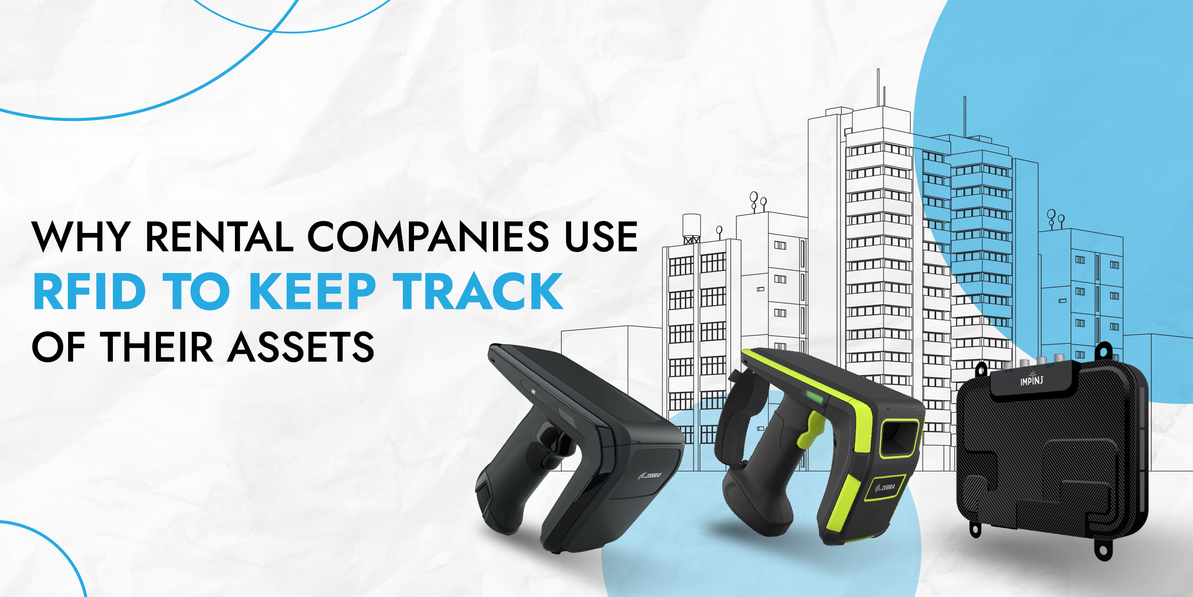Why Rental Companies Use RFID to Keep Track of Their Assets
The Challenges in the Rental Business
Asset Loss
The rental industry worldwide faces significant challenges in tracking its assets. Year after year, asset loss has been a persistent issue. While some reasons for asset loss are beyond the business’s control, those within their control are still challenging to manage.
Manual Inventorying
Manual inventorying is tedious and resource-intensive. Furthermore, after each cycle count, the information quickly becomes outdated as asset inventories are dynamic. Shutting down operations for a few days to conduct inventory also incurs revenue loss, adding to the difficulty. With assets coming and going daily, tracking them efficiently remains a major headache for businesses globally. Effective tracking would provide numerous benefits and improve accuracy.
Need for Accuracy
The need for accuracy is crucial, but obtaining precise data is another challenge. Rental businesses require immediate access to accurate data, as customers expect complete orders for their events. Manual counting becomes increasingly difficult as the scale of the rental order grows. Additionally, rental businesses can only validate and verify their inventory, manually, a limited number of times each day. Managing inventory accuracy across various asset types adds another layer of complexity.
Impact of Incomplete Orders
Incomplete orders can lead to profit loss due to the time needed to replace missing inventory. This not only impacts profits but also affects customer experience and the company’s reputation for reliability in handling rental orders.
Challenges in Validation and Reconciliation
Another challenge is validating and reconciling items checked back into inventory with those removed. Manual counting or even using barcode scanners often falls short. Without a reliable and quick scanning tool, asset loss cannot be effectively prevented.
Solution
Finding the Right RFID Tag
The first step in implementing RFID technology is tagging your rental assets. Selecting the appropriate tag and determining the information it will carry is essential.
Different tag formats are suitable for various types of rental items:
- Apparel, Garments, and Clothing: For items like costumes or suits that frequently go in and out of inventory and are regularly washed or dry-cleaned, laundry RFID tags are ideal.
- Gadgets and IT Infrastructure Spare Parts: Cable RFID tags are suitable for tracking expensive cables used with AV equipment at events or conferences.
- IT Equipment and Gadgets with Metal Components: On-metal RFID tags are the preferred choice for items with metal parts.
- Tool Rental Equipment and Small Spare Parts: Tool RFID tags are designed for tools that are difficult to tag with standard labels.
- Containers and Returnable Boxes: Various RFID enclosures and tags are available depending on the container material.
- General Items: For items not made of metal or exposed to water, standard RFID sticker labels are sufficient. These can be used for anything from plastic chairs to boxes of tissues.
Choosing the Right Hardware
The choice of hardware depends on the defined workflow structures. Rental businesses often require mobility and ease of use. RFID handheld readers are ideal for many scenarios, such as scanning equipment in and out of warehouses or storage. The ability to scan on-the-go enhances the frequent counting and validation of orders, providing greater asset visibility and traceability.
Using the Right Software Solution
Having the right hardware and tags is just part of the solution. Equally important is selecting the right asset tracking software. With numerous asset tracking systems available, it can be challenging to determine which one is best.
Logical Workflows and Traceability
The effectiveness of a system often depends on its logical workflows. Rental businesses value traceability throughout an item's lifecycle, including check-ins, check-outs, transfers, and new registrations. TagMatiks AT Lite offers key workflows and out-of-the-box reporting that supports effective rental business management.
Leveraging RFID for Efficient Asset Tracking
Using pre-programmed RFID labels and a handheld reader, rental businesses can leverage RFID4U’s TagMatiks platform for efficient asset tracking. TagMatiks AT Lite provides improved accuracy and visibility by simplifying asset-tracking transactions, such as check-ins, check-outs, and transfers. The mobility of RFID handheld readers also makes cycle counting more efficient, leading to more accurate inventory counts.
Features and Scalability of TagMatiks AT Lite
TagMatiks AT Lite offers robust features and is suitable for small businesses seeking an affordable RFID solution. It also serves as a proof of concept that can scale to an enterprise solution using the one-click migration tool to upgrade to TagMatiks AT Cloud.
Result
With a more efficient asset tracking system, rental companies can better utilize the data and analytics provided. Accurate inventory counts lead to improved customer experiences. Knowing which assets are available ensures customers find what they expect before picking up their rentals.
Frequent inventory counts and increased asset visibility reduce duplication and allow better investment in other assets. Loss is mitigated through reconciliation between expected and physically available assets. Real-time scanning of returned goods provides a snapshot for verifying returned items. The TagMatiks platform offers a powerful, straightforward solution for tracking rental assets, with quick report generation for improved business operations. Leveraging RFID technology through the TagMatiks platform can differentiate rental businesses from their competitors.
Recent Posts
-
RFID Shielding Box Secure, Accurate RFID Tag Reads
RFID (Radio Frequency Identification) technology has revolutionized asset tracking, inventory manage …Nov 20th 2025 -
Revolutionizing Asset Tracking in 2026 with Zebra RFID Readers
As enterprises scale and supply chains grow more complex, the need for real-time, error-free asset v …Nov 5th 2025 -
Ultimate Comparison of Zebra RFID Printers: Desktop vs. Industrial vs. Mobile
RFID printing is no longer a niche capability—it’s a cornerstone of modern asset tracking, inventory …Oct 22nd 2025




